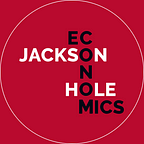Omicron is Only Part of the Story
by Larry Hatheway & Alex Friedman| November 29, 2021
For most of 2021, a common thread dominated investment thinking. Recovering global growth, underpinned by vaccination-enabled economic re-opening, and fueled by easy monetary and fiscal policies, would boost corporate earnings. In a world of negative real interest rates and unrewarding credit risk premiums, the absence of alternatives (TINA) and the fear of missing out (FOMO) would push equity markets ever higher. The doubters and Cassandras were pushed to the sidelines.
Indeed, that is exactly how things have played out this year.
Easy money and strong corporate earnings propelled global equities higher. In the recently concluded Q3 corporate earnings season, US earnings per share rose 40% relative to year-ago levels. Three quarters of S&P500 companies reported better-than-expected profits and four fifths beat revenue estimates. Not even the Fed’s tapering announcement and some discounting of 2022 Fed rates hikes could dislodge equity bulls.
Confidence was reflected in valuations. Year-ahead price-to-earnings index multiples recently rose to levels that exceed long-term norms by a third.
Still, there has been a nagging worry that a combination of monetary policy tightening, margin pressures, and lofty valuations would challenge or even topple the bullish equity consensus. Fortunately, the convergence of a triple threat of rate hikes, earnings disappointments and market misalignment was repeatedly nudged into the future, always at a safe distance from today’s investment decisions.
That future may now have arrived.
The immediate catalyst is presented by the Omicron mutation of the Covid-19 variant, which threatens to unnerve consumers, workers, businesses, and governments, inducing both weaker demand and greater disruptions to supply.
The near-term concern is that spending might stall for travel, leisure, hospitality and dining away from home — the industries hardest hit by Friday’s sell-off. But more broadly, if workers are afraid to go to their jobs, supply chains near and far could be pinched even tighter. Price spikes could hit corporate profit margins and consumer pockets. Uncertainty and sticker shock could slow broader spending, above all for big ticket items. Price surges would be transmitted quickly into broad consumer price indices. Stagflation — a scourge from the 1970’s remembered by few of today’s investors and policymakers — might result.
Those are reasons enough to fret about the economic and market implications of Omicron. But Omicron is not the only threat to investors.
To begin, we must acknowledge that at this early juncture we simply don’t know enough about Omicron to draw firm conclusions about its potential impact on the world economy and financial markets. Early indications are that it is a highly contagious variant as reflected in its rapid spread from southern Africa to western Europe in just a matter of weeks. But it is not yet known whether Omicron also reflects a more deadly variant than its predecessors.
Still, investors are spooked. Thin holiday markets contributed to the volatile price declines in equity and commodity markets last week, as well as to the plunge in bond yields.
But akin to medical research, market diagnosis must distinguish between symptoms and causes, no matter how difficult that may be in real time. In our view, markets were building to this moment. The ability to celebrate the present and push risk out to the future was waning before the arrival of Omicron. Rather than viewing Omicron alone as the great threat to global risk assets, it makes sense to contextualize it as exposing deeper and more fundamental market risks.
Here’s why.
Despite stellar 2021 earnings, corporate profits momentum is waning. Consensus 2022 earnings growth is a pedestrian 8%, a far cry from its torrid pace this year. Nor is that merely about the end of easy comparisons (‘base effects’) as 2022 gets underway. Sequential earnings growth from one quarter to the next has been decelerating since mid-year. On its current trajectory, quarter-on-quarter earnings growth for the S&P500 will stall, or turn negative, by the Spring of 2022.
Higher costs for materials, energy and labor are one reason. But the sharp improvement to the bottom line driven by opportunistic recession-related cost-cutting is also over. The need to hire, build out capacity, ensure robust supplies, advertise, and re-tool distribution and sales is pushing up costs faster than revenues for the average listed company. Our proprietary models that correlate factor returns to consensus estimates of analysts confirm the same — economy-wide earnings momentum is nearing stall-speed.
For equity markets that already command high multiples, earnings disappointments will be a big challenge. Couple that threat with worries about slower growth or higher inflation — or both in the form of stagflation — courtesy of price and wage increases that are proving more widespread, persistent, and stronger than central bankers or economists thought possible, and suddenly the market’s glidepath looks bumpy, even precarious.
Over the last year, investors have largely adopted a ‘see no evil, hear no evil’ attitude when it came to the idea that monetary policy tightening would arrive just as earnings growth flat-lined. They became seduced by faith that the future could be considered tomorrow. Transitory not only defined a gentle inflation soft-landing, but also stood for a sense of perpetual Goldilocks — a future that never impinged on the present.
Omicron is exposing the precariousness of such thinking. The future can’t be postponed any longer. It has arrived.
